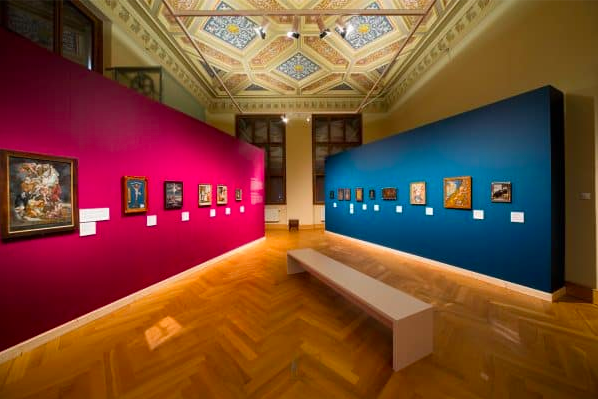What Gallery Walls Do You Need?
The gallery walls always require careful design and attention to detail, so that the overall picture of the building is in harmony with the expectation of visitors. It is important to decide from the very beginning with the style, with the installation of light and the choice of colors, so that the paintings play in contrast. They can be different in genres, in style, but they must be intertwined with a common idea, stretch one after another.

What Are The Basic Rules For Arranging Paintings In Galleries?
The most important thing is to present the entire expected collection of paintings, to occupy most of the wall. At the same time, it must be taken into account that the canvases do not look like they have been thrown into a pile of work. They should attract attention, make you stop and go to the next one. The gallery walls don't need to be as similar as possible. You can create a hallway gallery style where one thought flows into the next painting where you can hang a letter board.
Height is also one of the rules that can give an advantage. There are no special secrets, since everyone conceives using the eye level rule. It means that the picture should hang 152 centimeters above the ceiling. The art walls seem to be in the center of the wall and is available to any guest.
But this is only a small part of the architecture of the art gallery walls. Before installation, one should also take into account what kind of art is being formed, what type of composition suggests the genre of canvases. There are the following types:
- portable walls — this is when the expositions are on load-bearing stands, and the walls of the building serve as a background with lighting or the right color scheme.
- removable walls — look like a tent, which is attached between the corner of the wall and the ceiling.
- panel-wall art is an ideal option where you need to paint the walls and then the whole area becomes a solid gallery.
Portable walls include modular walls and are widely popular in the design of architecture. This is all, as mentioned above, a collapsible design that creates a level gallery. Stand length 600 or 1200 mm. This is a universal complex that allows you to quickly create various options.
In addition to modular walls, there are modular paintings. They destroy the usual idea of canvases. This is not a whole picture, but peculiar modules in which one idea is depicted in sections. They can be placed at a distance from each other or create a complex concept on modular walls.
And the final form of gallery art is fine and decorative art. This includes panel and wall art, which is made out on fabrics, awnings, and the most popular option is wall painting. Textiles can be hung up, creating a gallery from a tent, hung on showcases from modules. They do not take up much space, are light, quickly disassembled and cause inconvenience when carrying. Exhibition walls, like no other solution, will unite the walls of a room into an integral image idea.
